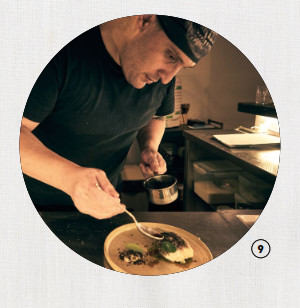Offal, off-cut, spare-part eats have moved from street food status to gourmet dining.



It looks like a plate of prawn fritters at first glance. Your curiosity is piqued upon closer inspection of the dish’s interesting “spikes”.
You’re thrown a curveball on your first bite: It has an intense chicken flavour, with a delicious, chewy and textured meat, like a drumstick.
And you’re not far from it. This oddball of a dish is cock’s comb – served at two of Bincho’s casual fine-dining restaurants at Dempsey Road and Moh Guan Terrace.
At the yakitoriya-inspired (Osaka’s traditional small grilling stalls) eateries, chicken is the mainstay, and every part of the animal is used for cooking by its executive chef Asai Masashi, including the tail, cartilage, heart, gizzard, neck and liver.
While the no-waste practice is deeply entrenched in Japanese Mottainai culture, “spare parts” are quickly finding a place on the marbled tables of fine-dining eateries – a trend that’s bolstered by the rising cost of produce, and the nose-to-tail global culinary movement towards minimal wastage.
CREATIVE, DELICIOUS
Chefs are diving into adventurous territory, pairing off-cuts and off al – once considered a poor man’s diet – with ingredients from the kitchen to enhance existing dishes with new flavours and create new dishes.
Take, for example, the Toh Thye San duck ($62) served at the famed Table65 modern European restaurant at Resorts World Sentosa. The duck breast is glazed with a reduced orange juice and soy sediment – the pulp left over from the process of making soy sauce with a crumble of cumin and dehydrated orange.
The remaining bones are roasted and infused to a bouillon. The sauce is made from duck legs and wings finished with red wine, foie, and the heart and liver of the duck.
The menu at Salted and Hung on Purvis Street revolves around the usage of the entire animal from protein to innards, skin to bone, all cooked to perfection using culinary methods like smoking, curing, pickling and grilling for its contemporary Australian menu.
After the dish is conceptualised, leftovers are mainly skin and shells. Chef Drew Nocente says: “I work from there on how we can use the by-products for another dish or to enhance the main dish I’ve created. After eliminating about 95 per cent of wastage, the dish finally goes on the menu.”
Here, the most popular dish is The Pearl Grouper ($58), where the whole fish is used. The bones of the grouper play an integral part in the creation of the varying flavours and textures.
It is first infused with soy for 30 days to make the aromatic sauce, then dehydrated and ground to a crispy crumble to garnish the dish.
The remaining bones are turned into stock to steam-bake the grouper. The result: a sublime and incredibly inventive fare that builds the appetite.
NARRATING A CULINARY STORY
While diners today have more sophisticated palates and seek out more interesting food experiences, it still boils down to restaurants educating consumers on what they’re paying for and eating now.
And it is the element of storytelling, about how the dish came about, that sparks diners’ interest, notes head chef Kenneth Oh of the upscale Gattopardo Ristorante di Mare, which serves contemporary Italian and Mediterranean cuisine.
On one Christmas, this Tras Street eatery purchased a fresh, whole swordfish, and the culinary team used the innards to make a swordfish mousse after smoking the loins.
Kenneth recalls: “This was served as a small amuse-bouche for guests. We use different parts of the same animal in different dishes across the menu, not just one dish.”
He adds: “It was fascinating for people to hear about the dishes, for example, the different parts of the fish that were used for which aspect of the dish. This is one way to engage diners to get them to take a greater interest in the finer aspects of their food.”






Dario Cecchini: The Man Who Started The Nose-To-Tail Culinary Movement
Walk into Carna and you’ll be introduced to the eatery’s meat programme before you pick the cut that you’ll be eating later. Carna is Dario Cecchini’s first steak house that opened last year in the Bahamas, and his first venture out of Italy. He’s the famed butcher-chef who has been championing the noseto-tail culinary programme for more than three decades. Today, it’s adopted worldwide.
Dario, 64, believes in working with farms that give animals a good life and compassionate death. He uses every part of the animal in his cooking, to give thanks for the sacrifice they’ve made.
With no premium or lower cuts of meat in Dario’s menu, every part is delicious when well-prepared, he says. His philosophy was inspired by his late granny, who used leftover cuts of meat from legs, snouts, tails and everything in the belly. Dario, who starred in Netflix’s 2019 food documentary Chef’s Table, says butchers have “the most important task in educating people to value everything they eat”.
























